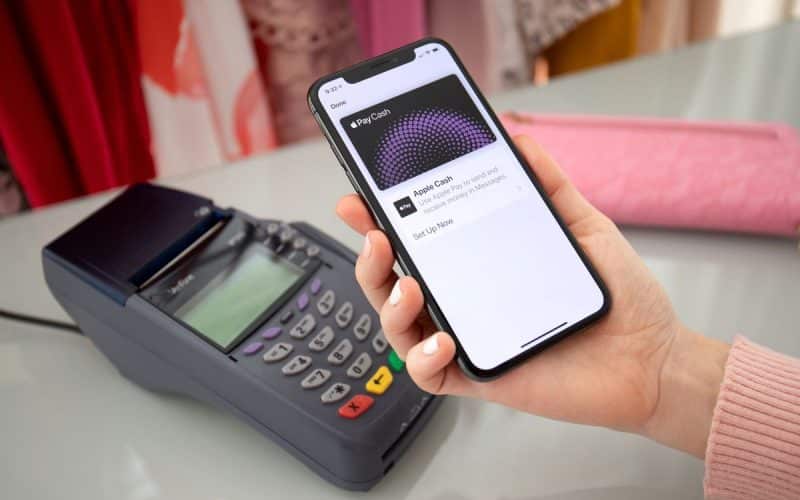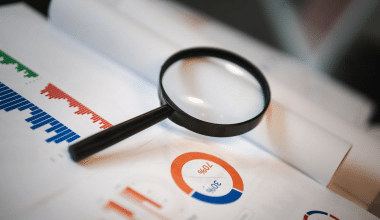Apple Pay is one of today’s most convenient and secure payment methods. The ease of using your phone or Apple Watch to make payments, combined with improved security features such as Face ID and Touch ID, has made Apple Pay an increasingly popular choice worldwide.
I recently assisted a friend who had just upgraded to an iPhone to set up Apple Pay for everyday transactions. Watching people realize how simple it was to use Apple Pay—whether paying for groceries at the grocery or completing an online purchase—reminded me of how convenient digital payments can be. Setting up Apple Pay could transform how individuals manage payments in Africa, where digital banking is becoming more popular.
In this article, I’ll explain how to setup and use Apple Pay for payments, answer frequent questions, and offer personal insights to make the process as simple as possible.
Why Apple Pay Is Important for Safe and Convenient Payments
Apple Pay allows you to make payments quickly, securely, and privately. According to Statista, Apple Pay has over 507 million users globally as of 2022, making it one of the most trusted digital wallets accessible today. To protect your card information, the system uses tokenization technology, which means that your real card number is never shared with retailers or kept on your device. This security element is crucial, particularly for those concerned about the security of online and in-store purchases.
As digital payments become more commonplace across Africa, Apple Pay provides a secure and convenient option that simplifies payments while reducing the risk of fraud.
Step-by-Step Guide for Setting Up Apple Pay
#1. Ensure Your Device Is Compatible
Apple Pay is compatible with a wide range of Apple devices, but not all of them. To set up Apple Pay, make sure your iPhone, iPad, Apple Watch, or Mac is compatible with the service.
Steps to Check Compatibility:
- iPhone: Apple Pay is compatible with iPhone 6 and subsequent devices. Simply go to your settings and look for an option to add cards to Apple Pay under “Wallet & Apple Pay.”
- Apple Watch: If you own an Apple Watch, sync it with your iPhone for a simple payment setup.
- Mac: Apple Pay is compatible with MacBooks equipped with Touch ID. Make sure your macOS is updated to enable Apple Pay.
Once you’ve confirmed that your device is suitable, you may begin adding your cards to Apple Pay.
#2. Add Your Card to Apple Pay
To use Apple Pay, first add your debit or credit card to the Wallet app on your Apple device. This procedure is straightforward and secure.
To add a card:
- Open the Wallet app on your iPhone or iPad. Then, tap the “+” icon in the upper-right corner.
- Follow the Prompts: Scan your card with your device’s camera, or manually enter the card information.
- Verification: Your bank may request extra verification for security reasons, such as a one-time password (OTP) or a phone call.
- Card Approval: Once verified, your card will be linked to Apple Pay and ready to be used for payments.
By linking your card to Apple Pay, you’ll be able to make contactless payments in stores, online, and in-app with a single tap.
#3. Set up Apple Pay on the Apple Watch
To utilize Apple Pay on your Apple Watch, you must first set it up on your iPhone using the Watch app.
Steps for Setting Up Apple Pay on Apple Watch:
- Open the Watch App: On your iPhone, launch the Watch app and select “Wallet & Apple Pay.”
- Add Your Card: Just as on an iPhone, you can add a credit or debit card by following the on-screen instructions. Before using your card on your watch, you must first validate it with your bank.
- Activate Apple Pay on Your Watch: After adding your card, you can make payments with your Apple Watch by double-clicking the side button and holding it near the payment terminal.
This configuration enables you to make payments even when your phone is not with you, adding another level of ease.
#4. Make Payments using Apple Pay
Once your card has been added, using Apple Pay to make payments is simple and secure. Apple Pay lets you make fast, one-touch payments in-store, online, or within an app.
How to use Apple Pay for in-store payments:
- Look for Contactless Terminals: Apple Pay is accepted any place you see a contactless payment icon or the Apple Pay logo.
- Hold Your iPhone Near the Terminal: On Face ID-enabled devices, double-click the side button and authenticate with Face ID before placing your phone near the terminal. To use Touch ID, simply place your finger on the sensor.
- Complete the Payment: Once authorized, hold your device close to the payment terminal until you feel a vibration or hear a beep.
For online and in-app purchases, just pick Apple Pay as the payment method at checkout and finish the transaction with Face ID, Touch ID, or your passcode.
#5. Manage Your Cards and Transactions
The Wallet app allows you to simply manage the cards you’ve added to Apple Pay and track your transactions. This is useful for tracking your expenditures and keeping your payment methods up to date.
How to Manage Cards in Apple Pay:
- Open the Wallet App: Launch the Wallet app on your iPhone.
- Select a Card: Tap on any card to view recent transactions, update billing addresses, or remove cards as needed.
- Set Default Payment Method: If you’ve added numerous cards, you can choose your preferred default payment method by dragging one to the top of the Wallet app.
FAQs About Setting Up and Using Apple Pay
Is Apple Pay compatible with all banks?
While Apple Pay is extensively used in many countries, not all banks and financial organizations embrace it. To utilize Apple Pay, your bank must have a partnership with Apple to enable transactions. This means that you can only add a card to Apple Pay if your bank has linked with Apple’s digital payment system.
Most major banks in North America, Europe, and parts of Asia support Apple Pay. Some banks in Africa may not yet support Apple Pay, depending on the country and financial institution. For example, many worldwide banks with African branches, such as Standard Chartered or First National Bank (FNB) in South Africa, may support Apple Pay, although other smaller regional banks do not.
To see if your bank supports Apple Pay:
- Go to Apple’s official list of supported banks and financial institutions.
- Contact your bank’s customer care to see whether their cards may be added to Apple Pay.
- Confirm that your card type (debit, credit, or prepaid) is compatible, as some banks may only allow specific types of cards to be used with Apple Pay.
If your bank does not currently support Apple Pay, you might want to look into alternative digital wallets such as Google Pay or Samsung Pay, which may offer more widespread support in your area.
Is Apple Pay secure?
Yes, Apple Pay is one of the most secure methods of making payments. Apple created the platform with numerous levels of protection to keep your personal and financial information private and secure. Here’s how Apple Pay provides security:
- Tokenization Technology:
When you add a card to Apple Pay, neither your device nor Apple’s servers record the actual card number. Instead, Apple Pay uses tokenization, which creates a distinct device account number, or token, for each transaction. This token substitutes your card number and is encrypted before being sent to the payment terminal. This ensures that even if a merchant’s system is compromised, your actual card details are safe. - Biometric Authentication: Apple Pay uses Face ID, Touch ID, or your device passcode to verify each transaction. This ensures that only you may authorize payments. If your device is stolen, Apple Pay will not work without your biometric data or passcode.
- Safeguard Element Chip: Apple Pay transactions use a dedicated chip, the Secure Element, to encrypt and safeguard payment information on your device. This hardware-based security layer makes it incredibly difficult for hackers to obtain your payment information.
- No sharing of transaction details
Apple Pay does not collect or disclose transaction information that could be used to identify you. Merchants only receive tokenized transaction information, not your actual card information, which protects your identity and financial data.
With these comprehensive security safeguards, Apple Pay has established itself as a reliable digital wallet for millions of customers worldwide. Even if you lose your device, you can stop Apple Pay remotely using Find My iPhone to keep your financial information safe.
Can I use Apple Pay internationally?
Yes, Apple Pay works abroad, as long as the merchant or retailer accepts contactless payments or Apple Pay expressly. Apple Pay may be used at millions of retailers worldwide that allow contactless payments, including stores, restaurants, and online businesses.
When going internationally, there are a few factors to consider:
- Merchant Acceptance: In most large cities and tourist sites, merchants that take Visa or Mastercard frequently accept Apple Pay. However, acceptance rates may differ in rural areas or in nations where contactless payments are less widespread. Before traveling, check to see if Apple Pay is commonly accepted in your destination country.
- Foreign Transaction Fees: Apple Pay does not charge fees for international use, but your bank may charge foreign transaction fees if you use your card in another country. These costs normally range between 1% and 3% of the transaction value. To minimize surprises, check with your bank beforehand to learn what fees apply to overseas transactions.
- Currency Conversions: When using Apple Pay abroad, the payment is completed in the local currency, with your bank handling the currency conversion. Keep in mind that currency conversion rates can vary based on your bank, so be aware of the exchange rate when making your transactions.
- Dual-SIM Support: When using an iPhone with dual-SIM capability when traveling, Apple Pay will use the primary SIM’s billing information. Ensure the correct payment card is linked to your Apple Pay account.
Whether you’re purchasing online from an international retailer or traveling abroad, Apple Pay provides a simple and secure way to pay without having to carry several cards or cash.
A Template for Setting up Apple Pay
Here’s a simple template that can help you rapidly set up Apple Pay:
Apple Pay Setup Template.
- Device Compatibility: Make sure your iPhone, iPad, or Apple Watch is compatible with Apple Pay.
- Card Information: To add a debit or credit card, open the Wallet app and follow the steps.
- Verification: Complete the bank verification process via OTP or phone call.
- Payment Activation: Begin making payments in-store, online, or through applications.
This template can help you streamline the setup process and guarantee you’re ready to use Apple Pay without any issues.
Key Takeaways
- Apple Pay makes payments easier by letting you use your device for contactless transactions, internet purchases, and in-app payments.
- Most banks worldwide support Apple Pay, making it simple to set up.
- Apple Pay prioritizes security, protecting your card details with tokenization and biometric authentication.
- Apple Pay is adaptable, functioning on a variety of Apple devices such as iPhones, iPads, and Apple Watch.
- Managing your cards and transactions with the Wallet app makes it simple to track spending and change payment methods.
Conclusion
Setting up and utilizing Apple Pay for payments is a simple process that adds convenience and security to your everyday purchases. Whether you’re paying for items in-store or making online purchases, Apple Pay offers a quick and dependable solution. With its expanding acceptance across Africa, now is an excellent opportunity to put it up and simplify your payment processes.
Have you had any difficulties utilizing digital wallets such as Apple Pay, and how did you overcome them?
Related Articles
- WEBSITES THAT ACCEPT APPLE PAY: All You Should Know and How It Works.
- IS APPLE PAY SAFE? What are the Downsides?
- HOW DO YOU USE APPLE PAY: All You Need To Know
- DOES BEST BUY ACCEPT APPLE PAY in 2024? (Detailed Guide)
- APPLE CREDIT CARD: The Apple Credit Card Review 2024






